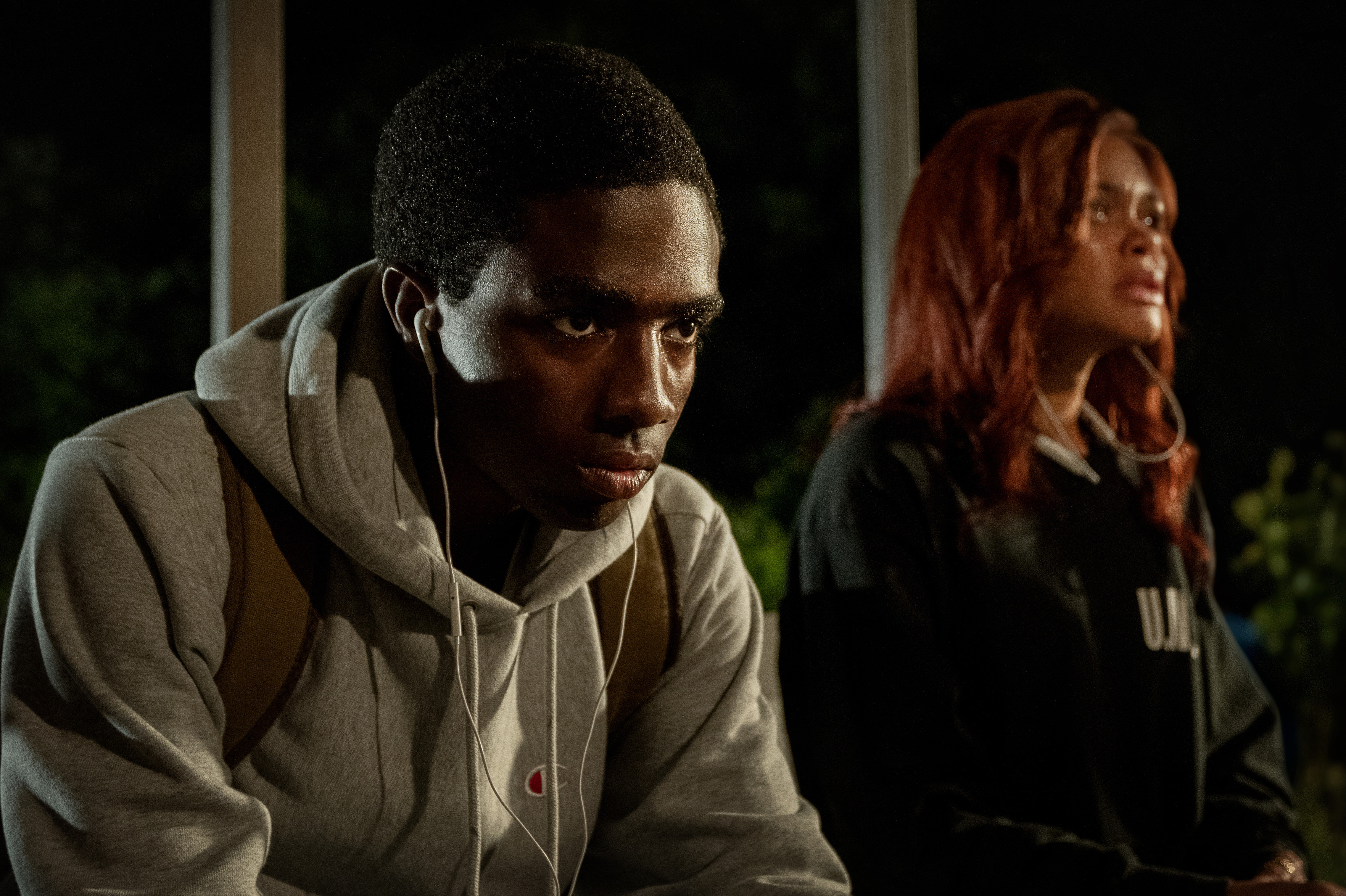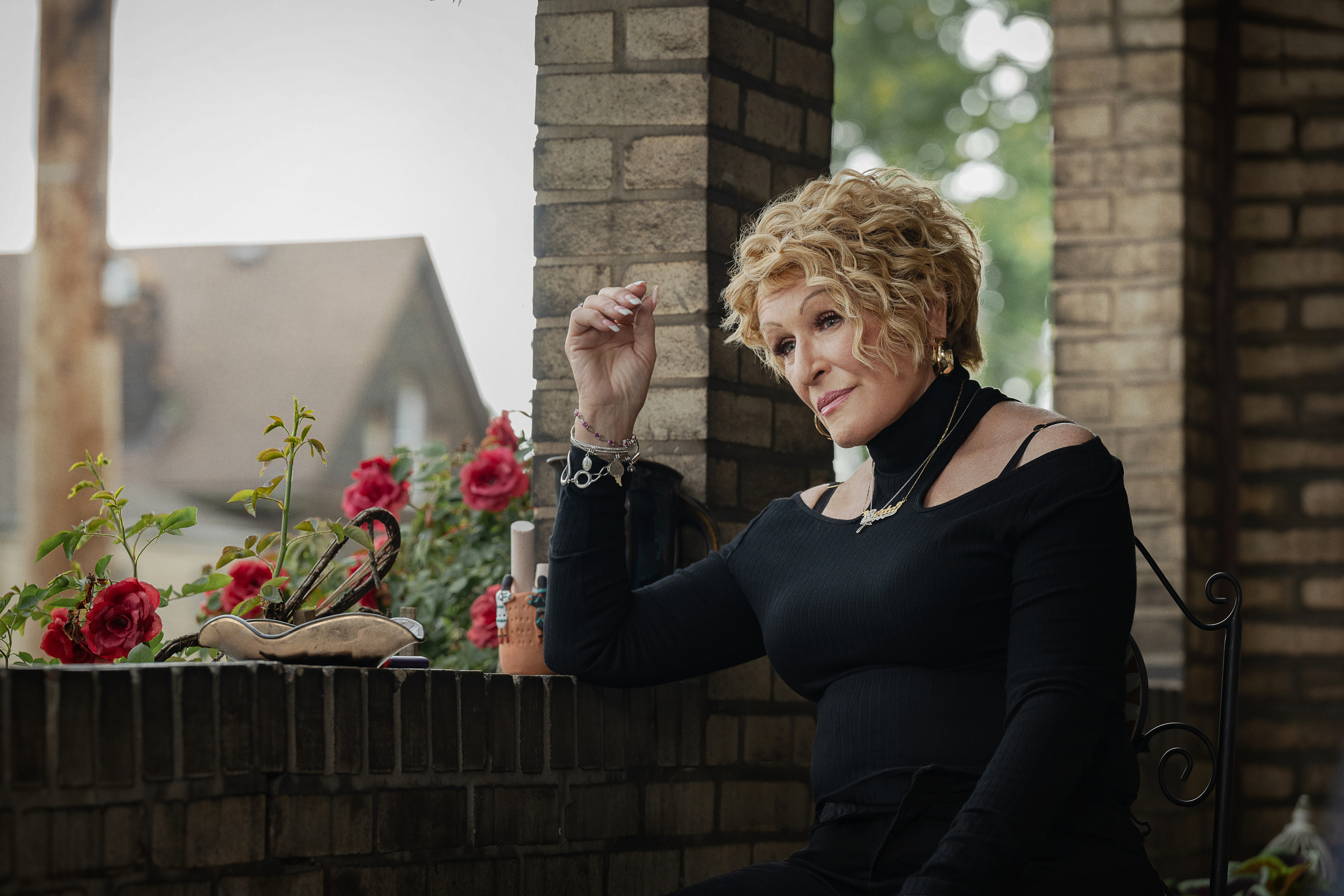Inspired by a chilling claim of “true events,” The Deliverance plunges viewers into the terrifying world of the Jackson family, a fictionalized group from Pittsburgh grappling with a demonic possession that threatens to tear them apart. This religiously-charged horror film, directed by Lee Daniels, known for Precious and The Butler, offers a dramatized take on the alleged haunting of the Ammons family in Gary, Indiana, back in 2011. Released in select theaters on August 16th and arriving on Netflix on August 30th, The Deliverance quickly raises questions about the real family behind the on-screen terror.
Starring Andra Day as Ebony Jackson, a character inspired by Latoya Ammons, the movie unfolds as supernatural occurrences plague Ebony, her mother (Glenn Close), and her children (Caleb McLaughlin, Demi Singleton, and Andre B. Jenkins). Infestations of flies, unexplained noises, and doors opening on their own are just the beginning as they settle into a rental home in Gary, Indiana, infamously known as the Demon House of Indiana. But how closely does The Deliverance stick to the actual experiences of the real family that inspired it?
Unveiling the Ammons Haunting: The Real Family’s Ordeal
 Nate and Ebony Jackson, portrayed by Caleb McLaughlin and Andra Day, face demonic possession in The Deliverance, a horror movie inspired by a real family's ordeal.
Nate and Ebony Jackson, portrayed by Caleb McLaughlin and Andra Day, face demonic possession in The Deliverance, a horror movie inspired by a real family's ordeal.
The unsettling narrative of The Deliverance finds its roots in the Ammons family’s alleged haunting, meticulously documented in a 2014 investigation by the Indianapolis Star. This report detailed Latoya Ammons’ growing conviction that demonic forces had latched onto her and her three children, then aged 7, 9, and 12, within their rented home on Carolina Street in Gary. While Ammons agreed to speak with the Star, she insisted on protecting her children’s privacy, ensuring they remained unnamed and un-interviewed. However, she provided the newspaper with access to medical, psychological, and official records, some of which were described as “not always flattering,” to substantiate her claims.
According to Ammons, the strange phenomena began in December 2011. Despite the cold winter, swarms of black flies invaded their screened porch. “This is not normal,” Rosa Campbell, Ammons’ mother, stated to the Star, highlighting the inexplicable nature of the infestation. “We killed them and killed them and killed them, but they kept coming back.”
Over the following months, the situation spiraled into increasingly disturbing events. Ammons recounted terrifying episodes where her children allegedly levitated, were violently thrown across rooms, and spoke in guttural, unnatural voices, indicating potential demonic possession of the real family members. The Gary Police Department, the Indiana Department of Child Services (DCS), and local hospital staff became entangled in the case, with some officers, medical personnel, and social workers reporting firsthand observations that seemed to corroborate Ammons’ unsettling narrative.
However, skepticism also emerged. In April 2012, an anonymous complaint lodged with DCS raised concerns about possible child abuse or neglect by Ammons. The complainant suggested Ammons might be grappling with mental health issues and that the children were acting out for their mother’s attention, thus fueling the alleged paranormal activity. DCS subsequently took emergency custody of Ammons’ children and was later granted temporary wardship.
A psychological evaluation of Ammons’ youngest son led a clinical psychologist to conclude that his accounts of possession were “bizarre, fragmented and illogical,” shifting with each retelling. The psychologist’s report suggested, “This appears to be an unfortunate and sad case of a child who has been induced into a delusional system perpetuated by his mother.” Similar findings were reported for the older two children by another psychologist.
In an attempt to address the perceived demonic influence, Rev. Michael Maginot, a priest at St. Stephen, Martyr parish in Merrillville, Indiana, performed three major exorcisms on Ammons at his church in June 2012. He also blessed her new home in Indianapolis after she moved. Following the move and adhering to DCS’ case plan, Ammons regained custody of her children in November 2012, marking a turning point for the real family involved.
Interestingly, the landlord of the Carolina Street house reported no unusual incidents before or after the Ammons family resided there. Despite this, the house gained notoriety, becoming the subject of Zak Bagans’ 2018 documentary Demon House. Ultimately, the house was demolished in 2016 during the film’s production, adding another layer of intrigue to the story of the real family and their alleged haunting.
The Deliverance Movie: How the Real Family’s Story is Adapted
 Glenn Close as Alberta in The Deliverance, depicting the grandmother in a family terrorized by alleged demonic forces in their Indiana home.
Glenn Close as Alberta in The Deliverance, depicting the grandmother in a family terrorized by alleged demonic forces in their Indiana home.
Like many horror films claiming to be rooted in true events, such as The Conjuring and The Exorcism of Emily Rose, The Deliverance takes considerable creative liberties with the Ammons family’s experiences, particularly concerning the exorcism, or “deliverance,” aspect. Lee Daniels, in an interview with The Hollywood Reporter, clarified his approach, framing the film as a “faith-based thriller.”
“We had never seen this story, through this lens of this African American woman, onscreen, and I just felt we’re in such dark times, and I don’t think people really know how dark of times we are in. And I felt like I needed to get reconnected to my higher power,” Daniels explained. “I’m scaring you to Jesus—for me. It could be scaring you to Allah, it could be scaring you to Buddha, it could be scaring you to whomever it is that you have faith in, but it’s scaring you to a faith.” This statement highlights Daniels’ intention to use the horror genre to explore themes of faith and spiritual resilience, rather than strictly adhering to the factual details of the real family’s story.
Daniels mentioned speaking with Latoya Ammons “once or twice” early in the filmmaking process but emphasized that The Deliverance is “my interpretation of her life story.” He deliberately avoided extensive contact, stating, “I purposely didn’t want to meet her because I was nervous.” However, he noted, “And she’s lovely. She was at peace,” suggesting Ammons’ acceptance of his adaptation.
The director further elaborated on specific alterations made to the Ammons case. “What I’ve changed a little bit is I made her mother white because I have so many mixed-race friends and [I wanted to talk about] what it’s like to have a white mother and live in a Black girl’s body,” he revealed. Additionally, the real-life deliverance was performed by a male priest, whereas the movie features Aunjanue Ellis-Taylor as Rev. Bernice James, a female deliverance minister. Daniels explained this change was to recognize the often-unseen contributions of women in this type of spiritual work. Naturally, names and locations were also changed for the film.
Another significant shift in The Deliverance is the setting and nature of the religious ritual. In reality, Ammons underwent exorcisms at a church, but the film depicts a “deliverance” performed at the family’s home. Andra Day explained to the Boston Herald that deliverance, as she understands it for the movie’s context, goes beyond simply expelling a demon.
“It’s more about the whole deliverance of the person,” Day stated. “Not just getting rid of the demon, but actually ushering them into a relationship with God. Or with Christ. It’s a whole transformation thing.” This distinction underscores the film’s thematic focus on spiritual transformation and the broader concept of deliverance as a holistic process, moving beyond the traditional exorcism narrative often associated with demonic possession stories and the real family experiences that inspired The Deliverance.

